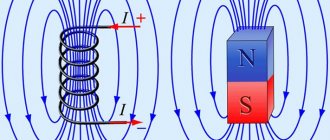Imagine a situation where you are connected to an external electrical network not directly, but through an intermediary (for example, there is an industrial enterprise nearby), and your electrical installation receives energy from the power installation indirectly. In such a situation, you will often have disputes over power, the amount of energy consumed and the procedure for paying for consumed electricity.
Of course, the best solution to this problem is to change the connection point, that is, disconnect the intermediary from the network and reconnect directly to the power supply of the network organization.
Technically, this is not difficult: we connect a new connection in one place, and disconnect the old one in another. Before 2003 it was really easy. The legislative framework in the field of electricity was democratic, and there were no special requirements for technological connections at all, since there was no concept of “technical connection”.
What about today? Is it possible to apply to change the point of connection to power supply networks? And how to do this legally and technically correctly?
Checking compliance with technical conditions and obtaining permission to operate metering devices
Verification of your compliance with technical conditions in cases where coordination of technical conditions with the subject of operational dispatch control is not required is carried out by the network organization.
To check the fulfillment of technical conditions, you send a notification to the network organization about the fulfillment of technical conditions and attach the following documents:
a) copies of certificates of conformity for electrical equipment (if the equipment is subject to mandatory certification) and (or) accompanying technical documentation (technical data sheets of equipment) containing information about certification;
b) copies of sections of the design documentation providing for technical solutions that ensure compliance with technical conditions;
c) documents containing information on the results of commissioning, acceptance and other tests;
d) normal (temporary normal) diagrams of electrical connections of an electrical power facility, including a single-line diagram of electrical connections (electrical installations).
If the electrical equipment includes only an input device with a voltage of up to 1000 V, lighting installations, portable electrical equipment and power receiving devices with a rated voltage of no higher than 380 V, then the documents specified in subparagraphs “c” and “d” are not required.
Network organization:
a) check the compliance of technical solutions, equipment parameters and measures taken specified in the documents with the requirements of technical specifications;
b) will inspect the connected electrical installations of the applicant for compliance of the technological connection activities actually carried out by the applicant with the technical conditions and the design documentation submitted by the applicant or for compliance with the requirements specified in the technical conditions.
At the same time, you must obtain permission to operate the metering device and draw up a certificate of approval for the metering device into operation. To do this, you need to send an application to the network organization to obtain permission to operate the metering device.
To allow the metering device into operation, the network company invites a representative of the energy sales organization with which you plan to enter into an energy supply agreement.
The network organization inspects the connected electrical installations up to the switchgear (point).
After checking the technical conditions and obtaining permission to operate the metering device, it is necessary to organize the process of actually connecting the objects to the electrical networks. This can be done by a representative of the network organization immediately after the inspection, or you will need to agree with the network organization to carry out this activity additionally.
Based on the results of measures to verify the fulfillment of technical conditions and after the actual connection of the object to the network, the network organization, within 3 days, draws up an act on the fulfillment of technical conditions and sends it to you, signed on its part in 2 copies. You must sign a certificate of compliance with technical conditions within 5 days of receipt.
Electrification under the federal program
From time to time, information appears about a certain federal electrification program, the essence of which is that if a number of requirements are met (which are interpreted differently in different sources), the applicant pays only 550 rubles, and all other expenses are borne by the state.
However, the basic cost of connecting a site to electricity is already 550 rubles, without any government program. Therefore, it is worth noting that there is no electrification program at the federal level, but they can be carried out at the level of a specific region, which is worth considering and keeping in mind.
Payment for technological connection
The payment for technological connection will include the costs of the network organization for carrying out measures for the implementation of technological connection and the costs of constructing power grid facilities - from existing power grid facilities to connected power receiving devices.
Preferential categories:
- When connecting power receiving devices with a maximum power of no more than 15 kW (taking into account the power of previously connected devices), the fee for legal entities and individuals will be no more than 550 rubles. Subject to: selection of reliability category 3, the distance from the boundaries of the applicant’s site to the electrical grid facilities of the voltage class required by the applicant of the network organization to which the application is submitted is no more than 300 meters in cities and urban-type settlements and no more than 500 meters in rural areas.
- When connecting power receiving devices with a capacity of 15 kW and up to 150 kW from October 1, 2022, the fee does not include costs associated with the construction of power grid facilities from existing power grid facilities to the connected power receiving devices. That is, payment is taken only for paperwork. The maximum cost of such a connection can be up to 500 rubles/kWh.
This category of consumers can choose one of two payment options. The selected option is indicated when filling out the application:
- 15% of the fee within 15 days from the date of conclusion of the agreement, 30% of the fee within 60 days from the date of conclusion of the agreement, but not later than the date of actual accession, 45% of the fee within 15 days from the date of actual accession, 10% of the fee within 15 days from the date of signing the act on the implementation of technological connection;
- advance payment of 5%, interest-free installments of 95% with quarterly payment in equal installments for a period of up to 3 years from the date of signing the act on technological connection.
For applicants with a maximum power of more than 15 kW , there are two ways to calculate the technological connection fee:
- As the product of the maximum power value and the corresponding rate for the maximum power approved for the network company. This option is used when connection to power grids does not require the construction of long power lines or a large number of transformer substations;
- Using approved standardized rates for technological connection. The value of the maximum power is multiplied by the value of the rate for power and to the resulting value is added the product of the length of the power line planned for construction required to connect the consumer by the rate for the construction of this line (rubles per km) and the number of required transformer substations and the rate for their construction.
You have the right to choose which option will be used to calculate the fee when filling out an application for technological connection.
How much does it cost to install electricity?
There is a basic cost for connecting electricity, which is 550 rubles, however, to connect according to this tariff, the following conditions must be met:
- the amount of power required is no more than 15 kW;
- the nearest power transmission line of the required voltage is located at a distance of no more than 300 m for cities and urban settlements and no more than 500 m for rural settlements;
- one source of supply required;
- Electricity consumption will not be for production activities.
In other cases, the cost of connecting electricity will be determined according to established tariffs, which are regulated by local executive authorities.
The cost of connecting electricity can be 5-500 thousand rubles, depending on:
- required power;
- number of supply sources;
- distance from the site to the nearest pole;
- cost and nature of specifications.
IMPORTANT! Despite the possible monetary costs, it is necessary to connect to electricity according to all the rules, in accordance with the current legislation of the Russian Federation. If an unscrupulous consumer is connected to the power line without authorization, he or she faces high fines and penalties, including criminal liability!
Terms of technological connection
The timing of technological connection in accordance with current legislation should not exceed:
- for temporary connection - 15 working days (unless a longer period is specified in the application)
- for legal entities, connection with a capacity of no more than 150 kW, individuals, connection to networks with voltage levels up to 20 kV - 6 months
- for legal entities, the connected capacity of the facilities does not exceed 670 kW - 1 year
- for legal entities whose connected capacity exceeds 670 kW - 2 years
Where to go and list of documents
An application for connecting electricity to a land plot is called an application for TP to electrical networks . The procedure is carried out by an organization that owns all types of electrical grid infrastructure facilities with the required voltage level, for example, in Moscow it is PJSC MOESK.
Contacting the client center of Interregional Distribution Grid Companies (IDGC) allows you to decide on the choice of the organization to whose department the house (site) is assigned. An application for connecting electricity to the site is also filled out there (in the standard form of PJSC MOESK and a sample filling). After receiving the contract for technical connection and specifications, an act on the implementation of the technical connection is drawn up and then signed.
Today, it is possible to submit an electronic application for TP and receive documents in your personal account on the website of the electric grid company.
Connecting 15 kW MOESK to a house involves providing a full package of the following basic documents:
- the applicant's identity card;
- layout plan of electrical control units connected to electrical networks;
- single-line connection diagram 15 kW with the possibility of redundancy and load switching;
- list and indication of power indicators of electronic control units connected to automatic operating and emergency devices;
- a document defining the ownership of an object connected to the electrical grid.
When contacting the applicant's representative, it is necessary to prepare a power of attorney and project contract documentation signed by the applicant.
If the EPU is not located outside the gardening partnership, then it is necessary to submit a certificate about the number of land plots. The same rule applies when drawing up an agreement to connect electricity to a site without buildings.
Project documentation relating to the electrification of a household or site is supplied with special calculations of the required power indicators, as well as the total amount of all materials and the location of the equipment in use.
A standard project includes the following information:
- balance sheet affiliation;
- operational responsibility;
- general data with explanations;
- electrification diagram;
- plan indicating the location of lighting fixtures and sockets;
- layout diagram of equalizing networks (additional);
- equipment used.
The preparation of project documentation in accordance with the current requirements of the ESKD is carried out by special organizations, the list of which can be specified in the ESO.
Arrangement of EPU
Ensuring a three-phase connection of a country house with 15 kW will allow compliance with all stages of arrangement of the electrical control unit. Initially, you should prepare a plan for the location of the EPU, which should reflect the main elements:
- objects connected to the network (residential building and others);
- position of electrical objects (electricity pole on the site, power lines, transformer box);
- boundaries of the site according to the cadastral plan;
- area of the electrified facility.
The execution stage takes into account all electrical installation work that is prescribed by the technical specifications (affecting applicants and the electrical network). In accordance with the standard scheme for connecting to energy networks, the general electrification algorithm is determined.
Applicants must bear not only balance sheet, but also operational responsibility within the boundaries of their site. The network organization bears such responsibility strictly beyond the boundaries of the applicant’s territory, unless otherwise agreed in the concluded contract.
To connect electricity to a dacha or a private household, all requirements relating to the implementation of specifications, as well as the applicant’s power receiving devices (EPD), are checked.
Connection points cannot be located further than 25 m from the boundaries of the territory with the applicants’ facilities.
It is important to comply with a number of requirements, including
- installation of a pipe stand with a shield,
- selection of an electricity consumption meter,
- ASU and
- RCD.
Typical design of a transformer substation with an electrical panel outside the boundaries of the site.
The optimal option for devices used when connecting electricity at 15 kW:
- parapet pipe stand with mounting feet and a toe ring in the upper part;
- three-phase three-tariff electricity meter 25 A;
- input and distribution devices;
- distribution (steel) panel for connecting 15 kW ;
- device that performs protective shutdown ;
- lightning protection (special arresters, lightning arresters and stabilizers);
- electrical wire (cable) for connecting 15 kW (4-6 sq. mm).
Grounding and resistance measurements, as well as other operational measurements in accordance with the Technical Operation Rules (PTEEP), can be carried out by the design organization.
Option for running the cable into the house from the underground switchboard
Only after all requirements regarding preparation for connection have been met, a representative of the network company goes to the site. If there are no complaints about the work performed, documents on technological connection are signed.
How to connect to electrical networks - pressure levers
The law regulates the rules for supplying electrical energy to the boundaries of consumers’ land, but in some cases the applicant may encounter some problems:
- failure to issue a contract by the electricity network;
- violation of technological connection deadlines;
- refusal to accept the application.
Combined boilers for wood and electricity are optimal for a country house, read on.
Basic connection diagrams for heating radiators in a private house https://klimatlab.com/otoplenie/sistema/skhemi-podklyucheniya-radiatorov-v-chastnom-dome.html
Any applicant must know their rights and obligations of energy supply organizations , and also be guided by current regulations:
- the electrical network must be stretched no further than 25 m from the boundaries of the site;
- commercial value applies to cases outside the established norms;
- working rules are regulated by Decree No. 861.
Any activity of an ESO that goes beyond the law, including violations of work rules, is suppressed by the antimonopoly services and threatens the organization with a large fine.











